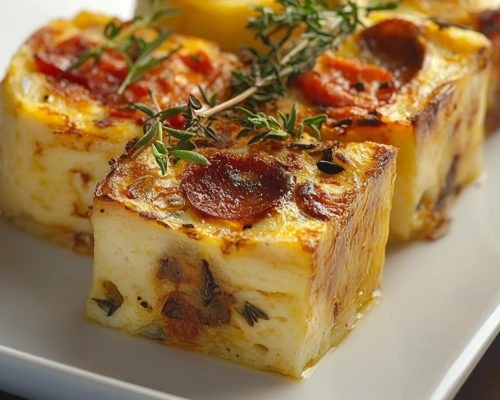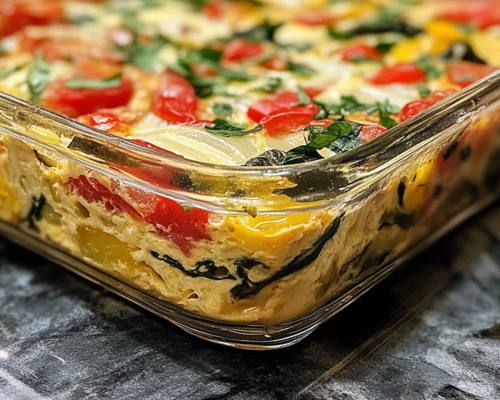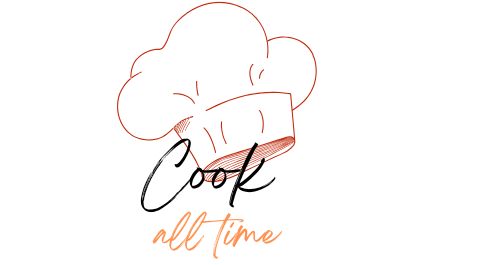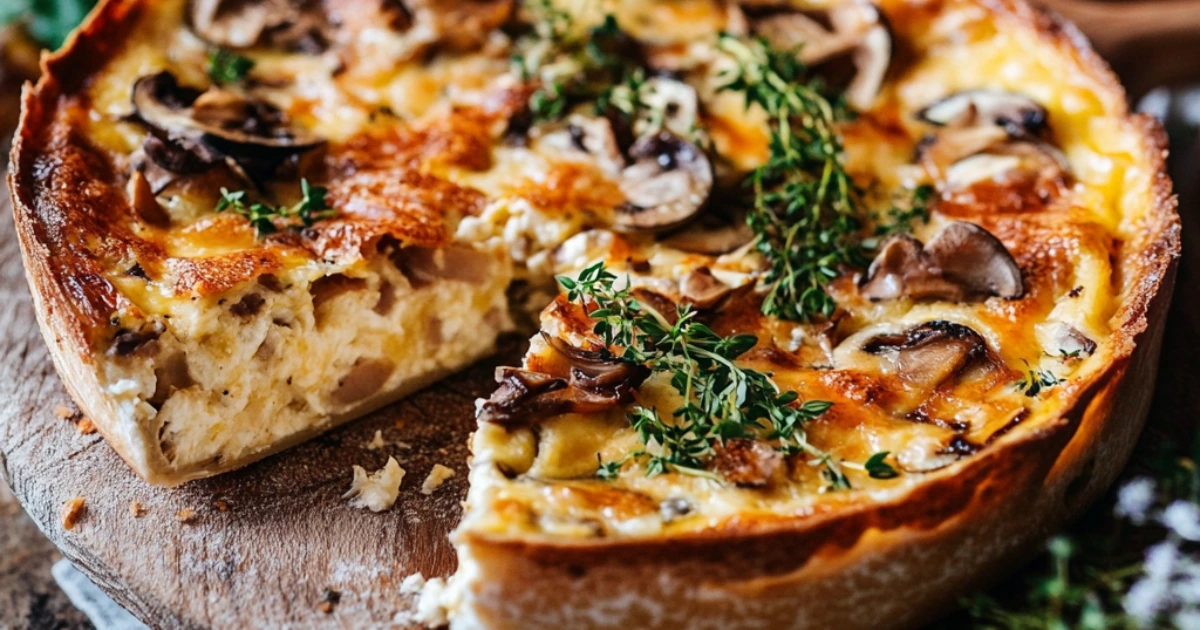Introduction
What’s the diff between a frittata and a breakfast casserole ? How does a frittata differ from a breakfast casserole ? Frittatas and breakfast casseroles are staples in many households, celebrated for their ease of preparation and ability to feed a crowd. Both dishes include a combination of eggs, proteins, and vegetables, making them nutritious and customizable.
Table of Contents
Why They’re Popular
- Frittatas: A quick and versatile dish often associated with Italian cuisine.
- Breakfast Casseroles: A hearty, make-ahead option perfect for gatherings.
Understanding what’s the difference between a frittata and a breakfast casserole can help you choose the right dish for any occasion.
Definition of a Frittata
What Is a Frittata?
A frittata is an egg-based Italian dish similar to an omelet but cooked differently. Its name comes from the Italian word “fritto,” meaning “fried.”
Key Features
- Made with beaten eggs combined with ingredients like cheese, vegetables, and meats.
- Typically cooked on the stovetop and finished under the broiler.
- Known for its light, fluffy texture and sliceable form.
Common Ingredients
- Eggs, milk or cream
- Cheese (parmesan, mozzarella, or feta)
- Vegetables (spinach, onions, peppers)
- Proteins (meat, sausage, or smoked salmon)
The simplicity and elegance of frittatas make them a favorite for quick meals or brunch spreads.
Definition of a Breakfast Casserole
What Is a Breakfast Casserole?
A breakfast casserole is a baked dish that combines eggs, bread, cheese, and other ingredients in a large baking dish.
Key Features
- Baked entirely in the oven, often in a single dish.
- Dense and hearty, with layers of ingredients.
- Ideal for feeding a crowd or making ahead.
Common Ingredients
- Eggs and milk for the base
- Bread cubes or hash browns
- Cheddar or Monterey Jack cheese
- Sausage, meat, or vegetarian options
Breakfast casseroles are perfect for holidays or busy mornings when you want a dish that can be prepared in advance.
Key Differences Between a Frittata and a Breakfast Casserole
Texture
- Frittata: Light, fluffy, and sliceable.
- Breakfast Casserole: Dense and hearty with layered textures.
Cooking Method
- Frittata: Cooked on the stovetop and broiled briefly to finish.
- Breakfast Casserole: Baked entirely in the oven.
Ingredients
- Frittata: Focuses on eggs with additional ingredients mixed in.
- Breakfast Casserole: Often includes bread or potatoes as a base.
Serving Style
- Frittata: Served in wedges, similar to a pie or quiche.
- Breakfast Casserole: Scooped or cut into squares.
These distinctions highlight why each dish is suited for different occasions.
How Frittatas Are Made
Step-by-Step Guide
- Prepare the Ingredients: Chop vegetables, cook proteins, and grate cheese.
- Whisk the Eggs: Beat eggs with milk or cream and season with salt and pepper.
- Cook on the Stovetop: Heat a skillet, add the egg mixture, and cook on low until edges set.
- Finish Under the Broiler: Transfer the skillet to the oven to cook the top until golden brown.
- Serve: Cool slightly, slice into wedges, and serve.

This method ensures a perfectly cooked, fluffy frittata every time.
How Breakfast Casseroles Are Made
Step-by-Step Guide
- Prepare the Ingredients: Cook proteins, chop vegetables, and shred cheese.
- Layer the Ingredients: Grease a baking dish, layer bread cubes or hash browns, then add the cooked proteins, vegetables, and cheese.
- Mix the Egg Mixture: Whisk eggs with milk or cream and pour evenly over the layers.
- Bake: Preheat the oven to 350°F and bake for 30-40 minutes until the casserole is set and golden.
- Serve: Let cool slightly before cutting into squares or scooping portions.

This process makes breakfast casseroles an excellent choice for meal prep or large gatherings.
Cooking Methods: Stove vs. Oven
Frittatas
- Stovetop Cooking: Begins on the stove to set the eggs.
- Broiler Finish: A quick broil ensures the top is cooked and slightly browned.
Breakfast Casseroles
- Oven Baking: Entirely baked in a dish, allowing the layers to meld together.
- No Stovetop Needed: Makes it more hands-off for busy mornings.
The difference in cooking methods affects the texture and ease of preparation for each dish.
Texture and Appearance
The texture and appearance of a dish play a significant role in its overall appeal.
Frittata Texture and Appearance
- Texture: Light, airy, and fluffy due to its stovetop and broiler cooking method.
- Appearance: Golden brown on top, with a smooth surface and visible chunks of vegetables or proteins embedded in the eggs.
Breakfast Casserole Texture and Appearance
- Texture: Dense, hearty, and layered, often with a slightly crispy top when baked.
- Appearance: Typically served in square or rectangular pieces, showcasing the layers of bread, eggs, and fillings.
Understanding these differences can help you choose based on the desired texture and visual appeal.
Common Ingredients
While both dishes share some ingredients, they each have unique elements that set them apart.
Shared Ingredients
- Eggs: The primary ingredient in both dishes.
- Cheese: Adds richness and flavor (e.g., cheddar, mozzarella, or parmesan).
- Proteins: Commonly include sausage, meat.
- Vegetables: Popular choices are spinach, peppers, onions, and mushrooms.
Unique Ingredients
- Frittatas: Often include cream or milk for a custard-like consistency.
- Breakfast Casseroles: Incorporate bread cubes or hash browns as a base layer for added substance.
These variations in ingredients contribute to the distinct textures and flavors of each dish.
Serving and Presentation: What’s the Difference in How a Frittata and a Breakfast Casserole Are Served?
The way a dish is served can enhance its appeal and practicality for different occasions.
How Frittatas Are Served
- Presentation: Sliced into wedges, similar to a pie or quiche.
- Occasions: Ideal for smaller gatherings or a sophisticated brunch.
- Serving Style: Served warm or at room temperature, making it versatile for casual or formal settings.
How Breakfast Casseroles Are Served
- Presentation: Scooped or cut into squares.
- Occasions: Perfect for feeding a crowd at holiday breakfasts or potlucks.
- Serving Style: Best served warm to showcase the layers and melted cheese.
By considering presentation, you can determine which dish suits your event.
Nutritional Comparison
Nutritional content varies depending on the preparation and ingredients of each dish.
Frittata Nutrition
- Calories: Generally lower, with fewer carbs since it doesn’t include bread or potatoes.
- Protein: High, due to the egg and protein-based fillings.
- Fats: Moderate, depending on the cheese and cooking oils used.
- Carbs: Minimal, making it a keto-friendly option.
Breakfast Casserole Nutrition
- Calories: Higher due to the inclusion of bread or hash browns.
- Protein: Comparable to frittatas, depending on the ingredients.
- Fats: Can be higher, especially if cream and cheese are generously used.
- Carbs: Significantly higher, making it more energy-dense.
These differences highlight how dietary preferences might influence your choice.
Cultural Variations: How Do Different Cuisines Approach Frittatas and Breakfast Casserole?
Both dishes are versatile and adapted by different cultures in unique ways.
Frittata Variations
- Italian Frittata: The classic version with parmesan, eggs, and seasonal vegetables.
- Spanish Tortilla: Similar to a frittata but uses potatoes as a key ingredient.
- Mexican Frittata: Features ingredients like chorizo, jalapeños, and queso fresco.
Breakfast Casserole Variations
- American Classic: Made with bread cubes, sausage, and cheddar.
- French Strata: A casserole with layers of bread soaked in an egg mixture and baked.
- Asian-Inspired: Incorporates rice instead of bread and flavors like soy sauce or ginger.
These cultural twists reflect the adaptability of both dishes across cuisines.
When to Choose Frittata vs. Breakfast Casserole
Deciding between a frittata and a breakfast casserole often depends on the situation.
Choose Frittata If:
- Occasion: You’re hosting a small brunch or looking for an elegant dish.
- Prep Time: You need a quick, stovetop dish.
- Dietary Needs: You want a low-carb, high-protein option.
Choose Breakfast Casserole If:
- Occasion: You’re feeding a large group or want a make-ahead dish.
- Prep Time: You have time to bake and assemble layers.
- Dietary Needs: You need a hearty, carb-inclusive meal.
Considering these factors ensures you select the dish that best fits your needs.
FAQs
What’s the difference between a frittata and a breakfast casserole?
The main differences lie in texture, cooking methods, and ingredients. Frittatas are light and fluffy, cooked on the stovetop, while breakfast casseroles are dense, layered, and baked.
Are frittatas healthier than breakfast casseroles?
Frittatas are generally lower in calories and carbs, making them a healthier option for those watching their intake.
Can I prepare these dishes in advance?
Yes! Frittatas can be made ahead and served at room temperature, while breakfast casseroles can be assembled the night before and baked fresh in the morning.
What are the best fillings for a frittata?
Cheese, spinach, mushrooms, and smoked salmon are popular options for frittatas.
How can I make a vegetarian breakfast casserole?
Replace meat with plant-based proteins like tofu or beans, and load up on vegetables like peppers, onions, and zucchini.
Are they equally customizable?
Yes, both are highly customizable. You can add a wide range of ingredients to suit your taste or dietary needs. However, frittatas are typically lighter and more focused on eggs, while breakfast casseroles allow for bulkier additions.
Which one is better for feeding a crowd?
A breakfast casserole is better for feeding a large group since it’s baked in a large dish and can serve multiple portions easily. A frittata is more suitable for smaller gatherings as it’s often made in a skillet and yields fewer servings.
Is one healthier than the other?
Frittatas are often considered healthier because they are lower in carbs, relying mostly on eggs and vegetables. Breakfast casseroles can be higher in calories and carbs due to the inclusion of bread, potatoes, or cheese.
Conclusion
In conclusion, What’s the difference between a frittata and a breakfast casserole? While both are egg-based dishes, they cater to different needs and occasions. Frittatas are light, quick, and elegant, perfect for intimate gatherings or low-carb diets. Breakfast casseroles, on the other hand, are hearty, layered, and ideal for feeding a crowd. By understanding their differences, you can confidently choose or create the dish that best suits your event or dietary preferences.Try variations like the Pancake Breakfast Casserole to expand your breakfast repertoire!

